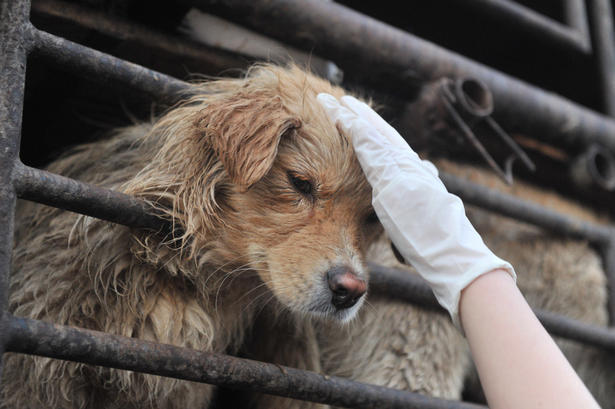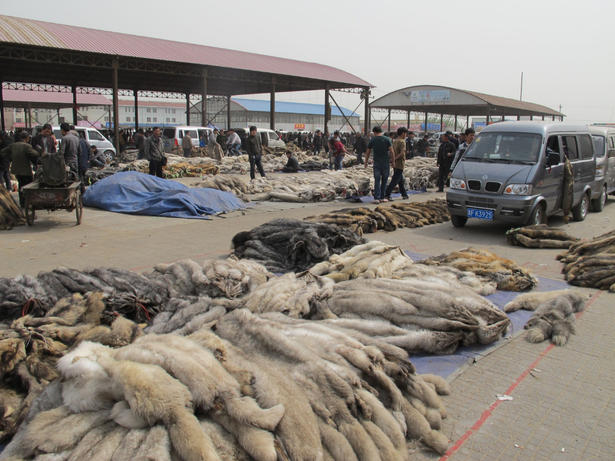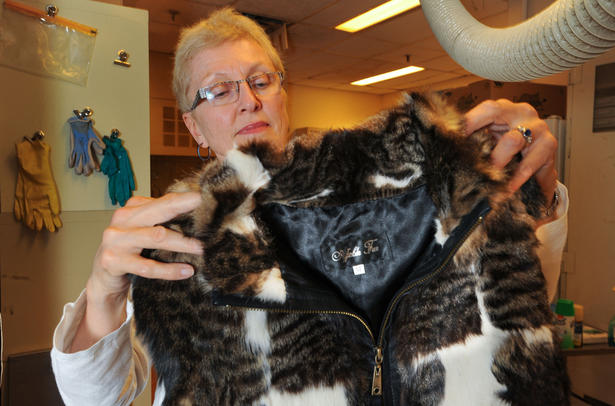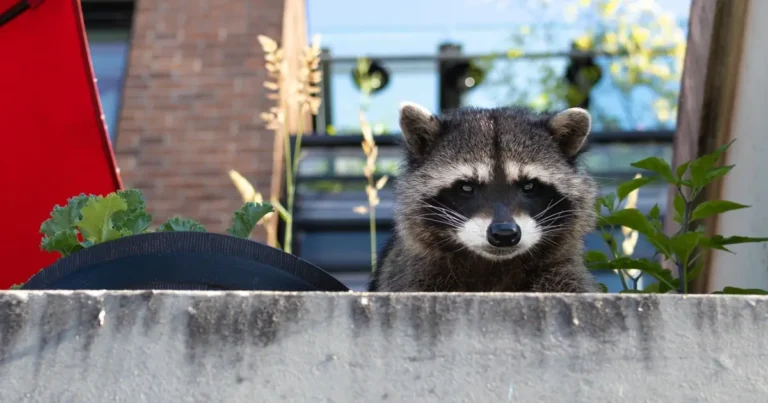Published in the Toronto Star
June 30, 2012
SHANGCUN, CHINA—A young man swaggers through the dusty streets of this crumbling village with a dozen freshly gutted minks slung over his shoulder. The slick black furs, destined to be fashioned into expensive coats and jackets, are still matted with traces of blood and dirt.
Shangcun is the rural epicentre of China’s fur-pelt industry. More than 60 per cent of the country’s trade in unprocessed fur is conducted on the streets and in open-air markets of the tiny town about 100 kilometres south of Beijing.
There are hundreds of fur vendors. While some merchants sell out of ramshackle stores, others, like the boy with the dark hair and confident stride, peddle their fur on the sidewalks.
READ MORE: Animals rights spark new cultural way in China
He carries his pelts with the nonchalance of a businessman toting his dry-cleaning. He mingles easily with the other small-time ranchers who squat on their haunches behind stacks of fox, mink, rabbit and raccoon dog. A thick grey fox pelt sells for about 600 yuan ($90) each. He pokes his head inside stores where men in worn-out clothes play cards while silver fox pelts dangle from racks overhead.
On every third day of the lunar month Shangcun doubles in size — expanding into an enormous open-air marketplace where vans park in long rows from 6 a.m. till noon and small vendors sell furs, mostly to Chinese manufacturers.
In one corner of the market animals are killed. Women snatch the live animals by their back legs then smash their heads on the hard ground, or strike them over the head with a bamboo pole. The animals are stripped of their fur, which is stretched over wide wooden paddles.
This is the blood and guts of China’s flourishing fur industry.
China is the world’s largest exporter of fur garments, most made from mink, fox and raccoon dog.
Consequently, China’s garment factories have developed a voracious appetite for fur of all kinds. International clothing makers that use fur have added to the demand, opening operations in China to take advantage of the country’s cheap labour and lack of animal cruelty laws.
But the young and inefficient Chinese fur ranching industry can’t keep up.
The requirements are so great that China has become the world’s largest importer of raw fur. Chinese agents travel the fur auctions of the world for pelts that will satisfy garment factories clustered in places such as Hengshui, south of Beijing.
The demand is also satisfied another way — with domestic dog and cat fur. Animal rights activists say some of the fur comes from stolen pets, animals gathered and transported cruelly and then slaughtered inhumanely.
Most Western countries restrict imports of dog and cat fur. But not Canada.
The secretive sub-category of China’s flourishing fur business is not on display in the gritty Shangcun market today.
“No one sells cat and dog fur here because it’s free,” says one vendor.
It is a free because it is a byproduct of the country’s enormous dog and cat meat-slaughter industry.

Photo: A Chinese animal lover consoles a dog after a convoy of trucks carrying some 500 dogs to be sold as meat, were stopped along a highway in Beijing on early April 17, 2011.
Rural food markets sell live and recently butchered dogs and cats, while larger food processing plants grind the flesh into mass-market products. For example, dog is used to flavour inexpensive instant noodles sold in accurately labeled packages throughout the country. Dog meat is a staple for many rural families.
But the emerging animal welfare community has forced the cat and dog fur business into hiding.
This element of the fur industry operates under the radar, in private negotiations with slaughter houses, tanning factories, garment manufacturers and exporters.
It begins with men called “bunchers” who collect dogs and cats until they have enough dogs to sell to a food-processing plant or enough cats to peddle at markets that deal with restaurants. Most of this trade takes place in provinces in the south and in the northeast.
Some peasant families raise a few dogs that will ultimately be sold for slaughter. They’ll also snatch these animals off the street, cut a deal with police responsible for culling potentially rabid strays — or simply steal them from homes.
The furs come from the food-processing plants and restaurants as byproducts.
Garments made from dog and cat fur are sold in markets and stores, as well as on China’s version of eBay, called taobao.com — often as jackets or vests but also as fashion accessories, trinkets and trims, even as cat-fur car seat upholstery and dog-pelt mattress covers.
Mona Lung, a Beijing-based project officer for the animal rights group ACTAsia, estimates two million cats and dogs are slaughtered each year in China.
Once the flesh has been removed, cat and dog pelts are stitched together into large, uniform sheets of fur. They are separated by colour, pattern, texture and the length of the fur. Sometimes they are sheared or dyed to make them more fashionable.
VIDEO: A dog in raccoon’s clothing
The U.S., European Union and Australia have laws that ban importing cat and dog fur, whether it’s trim on a parka or the cuff on leather gloves.
Canada has no restrictions on fur imports, except for endangered species.
According to Industry Canada, 60 per cent of all fur garments that enter Canada come from China, trade worth about $12 million annually.
–
Because the cat and dog fur is often exported from China as trim on inexpensive garments, the U.S. tightened its ban in 2010 by requiring that all fur products be labeled — even those valued under $150 — for country of origin and species.
Canada has no similar requirements, despite the introduction of several private member’s bills in Parliament. Activists say that Canada could become a dumping ground for this fur.

Photo: Even in spring the fur market at Shangcun is busy with local ranchers selling fox, mink and raccoon dog.
In Hengshui , not far from the Shangcun market, Chen Shifeng operates Affable Fur. The company sells garments and accessories made from all sorts of fur, including mink and fox.
Affable Fur also makes cat and dog fur vests and bomber jackets, sometimes dyed pink — a hit with young girls, says Chen. Chen won’t reveal the source of his cat and dog fur, saying only, “when I need it I make a phone call and it arrives.”
Those in China’s fur industry have become suspicious and quick to close ranks when they feel they’re being targeted by a Western reporter or activist.
Sky News TV reporter Dominic Waghorn wrote of a harrowing experience while visiting the Shangcun market in 2006 to investigate China’s fur industry. He and his producer were chased by a “group of large, menacing men” when leaving the market. They were held by police, questioned for hours and forced to turn over a tape, a reminder, wrote Waghorn, “that in this part of China the fur industry runs things.”
While in China, the Star spoke to Chen Shifeng by telephone through an interpreter who told him she was representing a Canadian retailer who had purchased a cat fur vest months earlier though his company’s web site. She told him the “retailer” was interested in purchasing more cat fur products to be sold at stores in Canada, stressing that it was legal in Canada but that customers would not want products labeled cat or dog.
Chen touts dog fur as the perfect all-weather material — warm in winter and cool in summer. He is especially proud of his company’s three-colour cat furs — a mix of ginger, white and brown, for example, which he sells in panels, called “fur plates,” the size of bed sheets or made into tailored clothing.
He’s a willing negotiator.
When asked if he had ever labeled cat and dog fur as rabbit he confirmed it was common practice, then volunteered: “If the garments don’t sell within six months send me an email and I can send labels that say mink.”
This week, the Star phoned Chen again, explaining that we were not a retailer but were reporting a story on cat and dog fur sales.
He repeated that he would be willing to mislabel cat and dog fur, but only for small orders (one or two pieces), and if he were mailing it directly to a customer’s home. He wouldn’t do it for orders of hundreds, for example.
When asked whether he thought it was wrong to mislabel the fur, he acknowledged that it was and said he seldom does it, but added that other companies also mislabel.
Cat and dog fur is not being exported as full-length Cruella de Vil Dalmatian coats.
It is typically found on inexpensive garments, like the trim on a jacket, the lining in a pair of children’s boots, the plush exterior of a toy.
At Beijing’s famous Silk Market, a five-storey warehouse of knockoff designer fashion and accessories, cramped kiosks display wallets, scarves, jeans, handbags and perfumes with labels including Chanel, Dior and Louis Vuitton. Many of the vendors offer fake Canada Goose parkas — counterfeits of the popular cold weather coats that retails for $400 to $1,200. Genuine Canada Goose parkas use Canadian coyote for fur trim. Negotiations at the Silk Market start at $30; the final price is $15.
Last fall in Toronto, police seized a shipment of counterfeit Canada Goose coats from China. “I am very confident, based on our tests that the fur used on the counterfeit parkas were from domesticated animals — dogs and cats,” said Kevin Spreekmeester, vice president of global marketing for Canada Goose.
Once fur is mislabeled it is almost impossible to determine the species because of the harsh tanning, dying and shearing processes, explains Judith Eger, senior curator of mammals in the department of natural history at the Royal Ontario Museum.
DNA experts at the University of Guelph and at the University of Toronto agree — once the fur has been treated genetic sequences are virtually destroyed.
However, Eger confirmed that an Affable Fur cat vest purchased online was domestic cat. The sleeveless, zipper vest with the mottled pattern was constructed using as many as 10 similarly patterned brown, beige and white cats. It cost about $30.
But she couldn’t firmly identify the fur on a dozen other made-in-China garments that had been purchased at stores in Toronto and Vancouver.
The fur industry in Canada, which already feels under fire, accuses animal rights activists of using the dog and cat fur issue to tarnish the whole fur business.
The Fur Council of Canada, a non-profit industry association which represents members including trappers, farmers and retailers says animal activists have never found a single example of dog or cat fur in Canada.
Alan Herscovici, a council executive vice-president, says garments sold in reputable fur stores in Canada carry accurate labels that indicate the type of fur.
Herscovici also argues it is hardly Canada’s place to judge the source of fur.
“Who are we to impose the values of our rich and well-fed societies on developing nations with different customs?” the council asks on its website. “And, of course, we also kill millions of unwanted dogs and cats each year; are we morally superior because we are rich enough to throw them away, unused?”
Lesley Fox, spokeswoman for the Vancouver-based Association for the Protection of Fur Bearing Animals, wants Canada to bring its laws in line with the United States, which requires all fur be labeled.
Pei Su of ACTAsia agrees. “It will send a strong message to the Chinese that there is no need for this type of product and when there is no demand the killing will stop.”
Canadian politicians Anita Neville (Liberal, Winnipeg, South), Bill Siskay (NDP, Burnaby-Douglas) and Libby Davies (NDP, East Vancouver) have all presented private member’s bills aimed at banning cat and dog fur in recent years.
Last November, Brian Masse (NDP, Windsor West) introduced Bill C-349 to amend the Canada Consumer Product Safety Act and the Textile Labeling Act. It calls for products with cat and dog fur to be labeled as such.
“This is important because of the inhumanity that is often involved with the slaying of the dogs and cats, animals that we have as pets here in Canada,” he told Parliament. “I am sure most Canadians would not want to make that choice (to buy) if they knew that their child’s toy or scarf or coat had dog or cat fur.”
Davies has delivered numerous petitions to the House of Commons to support her bill C-296, also an act to amend the Canada Consumer Product Safety Act and the Textile Labelling Act to ban the importation of dog and cat fur. It would require all animal skins to be labelled. Like Masse’s bill, it has received first reading.
So far, the Canadian government has declined to change the current legislation. The Canadian Textile and Labeling Act requires only that fur products be labeled “fur.”
Industry Minister Christian Paradis responded to Star questions via email.
“The Canadian fur industry has a well-established policy that Canadian designers, manufacturers and retailers will not work with, buy or sell products containing fur from dogs or cats,” he wrote.
“In addition, Canada’s labelling statutes contain prohibitions regarding false or misleading representations and require a label containing information on the textile fibre content of consumer textiles.
“In an instance where there is sufficient evidence to demonstrate a violation, the Competition Bureau will not hesitate to take appropriate enforcement action.
“As with all bills, our government will study this when the time comes.”
Fox believes the government’s inaction stems from a reluctance to criticize China because it is the last major buyer of Canadian seal.
The European Union has closed its doors to seal. And last December, Russia announced it would cease purchasing Canadian seal.
In 2005, 330,000 harp seals were hunted. That number dropped to 38,000 in 2011 — after the EU stopped imports — but rebounded this spring to 70,000.
The Fur Council’s Herscovici says the issue in both countries is abundance: There are too many seals depleting important fish stocks in Canada and China has no shortage of cats and dogs. He says he is concerned, however, that all animals be treated humanely.
Animal welfare activists in China are now protesting Canada’s seal hunt and are calling for their government to ban the fur from their country. Lung says anti-sealing billboards are a mainstay on Beijing’s fourth ring of the subway system. “They get the attention of university students who use that line.”
When Gail Shea, Canada’s fisheries minister, visited China last year with sealing-industry representatives to promote seal fur, the Humane Society International and Chinese animal protection groups fought back with protests that included graphic footage of Canada’s seal hunt.
“This issue of dog and cat fur coming into Canada takes place below the radar,” says Davies.
Still, she insists “there is a huge constituency of people who care. This is non-partisan. It speaks to who we are as a society. You can’t have a political agenda when you speak of people’s rights or animal’s rights.”
With files from Jennifer Yang

IDing the cat fur vest
1 It is pieced together from smaller pelts. You can see obvious changes in fur pattern and colour that correspond to the seams below.
2 Some pieces are obviously cat, with the black stripe down the middle of the piece of skin, even extending into an obvious tail piece.
3 The white fur patches are part of pieces that also have dark fur on them and look like the belly and side of a domestic cat.
4 Fur consists of long silky guard hairs and wavy underfur, again looking like domestic cat.
5 Domestic rabbit and domestic cat are similar looking, but rabbit guard hair is shorter and less shiny/silky. Rabbit fur tends to be one colour — i.e. black all over. But even if it isn’t, rabbit doesn’t have stripes and spots that are found in this vest.
Judith Eger
All content owned by Toronto Star. Original published Toronto Star.
June 30, 2012
Learn more about the dog and cat fur trade:
Visit our webpage to see what we are doing to ban the import and sale of dog and cat fur in Canada
Print and sign a petition against the dog and cat fur trade (PDF)
